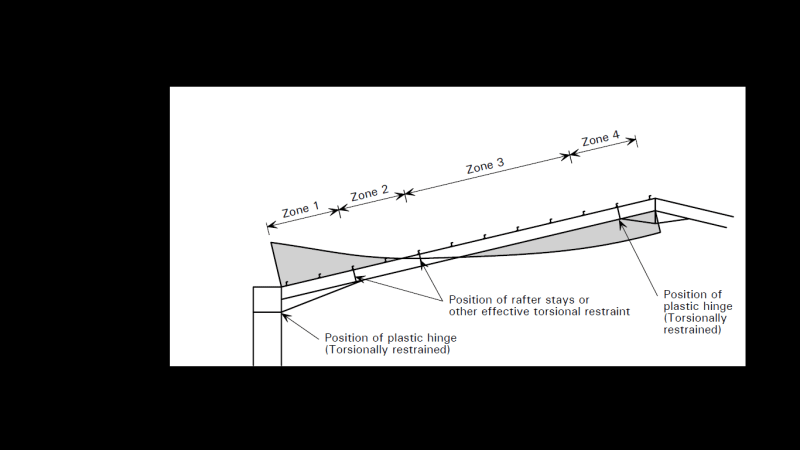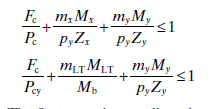Bubik
Structural
- Mar 15, 2016
- 103
Hi everyone,
I am designing a pitched portal frame elastically and need to check the stability of the haunched section of a rafter. As I don't have an option to use software , I have to do it by hand. I know how to conduct checks (lateral torsional buckling,combined lateral and axial,bending ,etc) if a section is uniform but in the case of a haunch, the section is non- uniform so I wonder how others would approach the problem. I heard that it is possible to divide the section into five sub-sections but I still don't know which 'end' of a subsection should consider.By the way I design to British Standards but input based on any other code would also be greatly welcomed.
Thanks in advance!
I am designing a pitched portal frame elastically and need to check the stability of the haunched section of a rafter. As I don't have an option to use software , I have to do it by hand. I know how to conduct checks (lateral torsional buckling,combined lateral and axial,bending ,etc) if a section is uniform but in the case of a haunch, the section is non- uniform so I wonder how others would approach the problem. I heard that it is possible to divide the section into five sub-sections but I still don't know which 'end' of a subsection should consider.By the way I design to British Standards but input based on any other code would also be greatly welcomed.
Thanks in advance!


